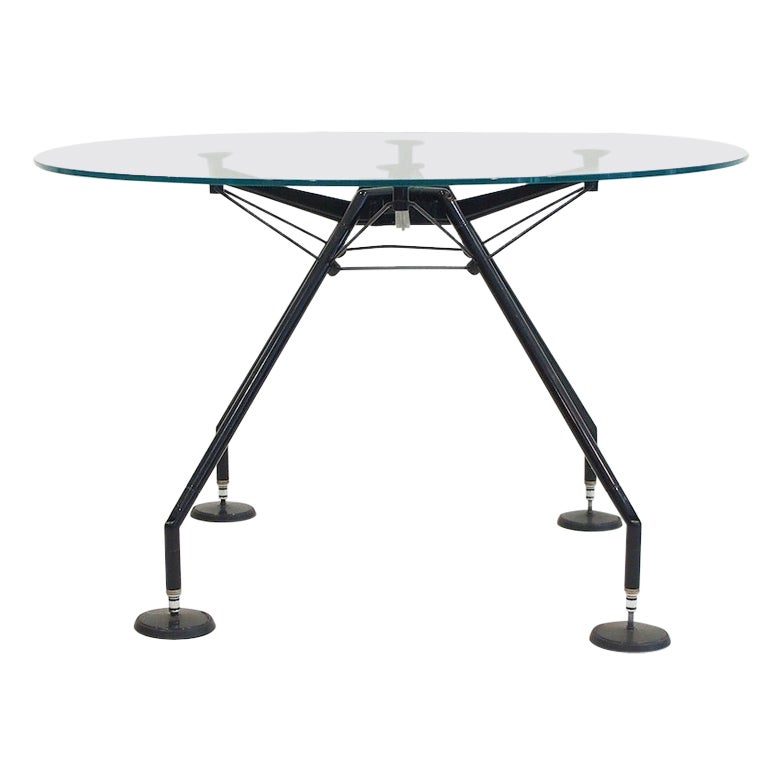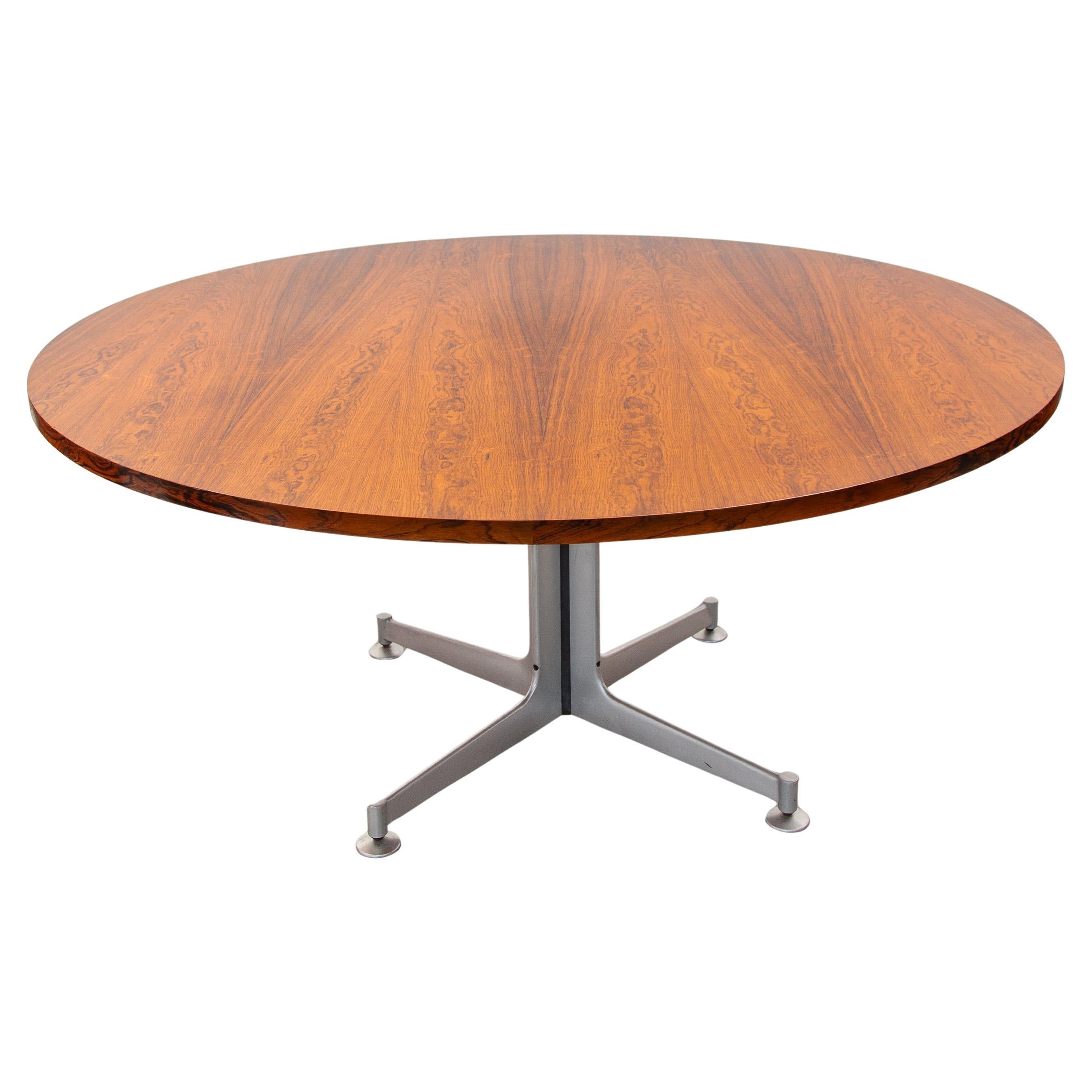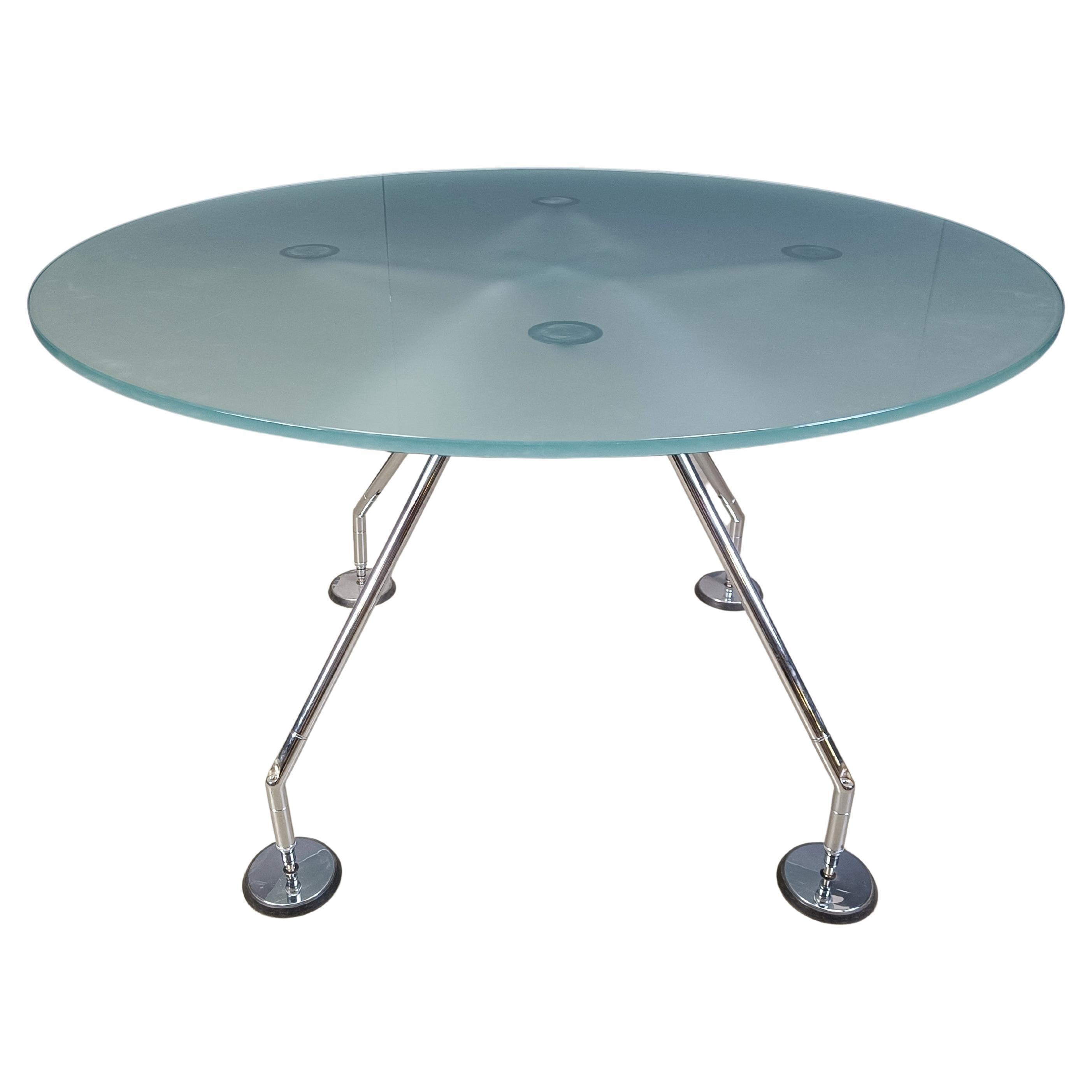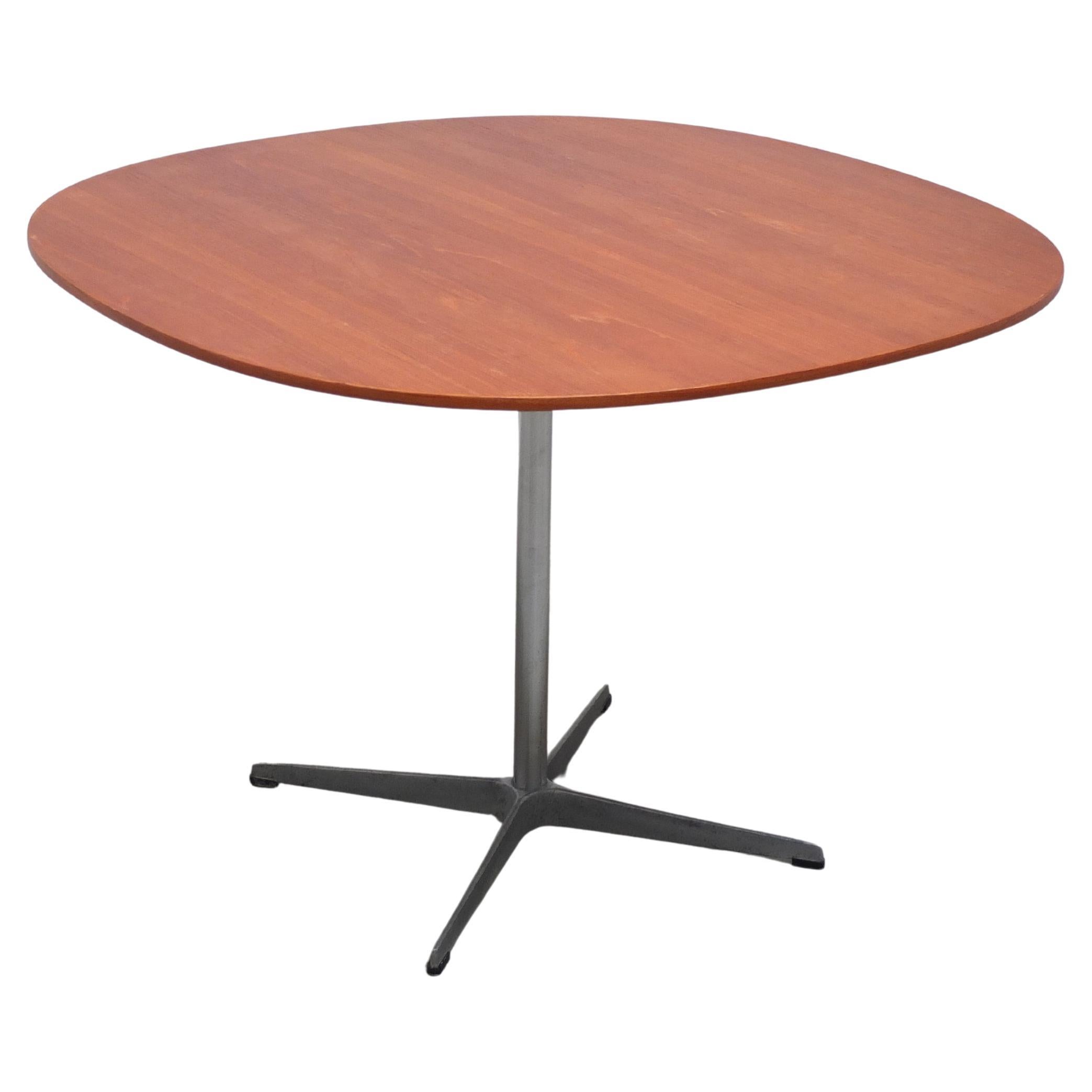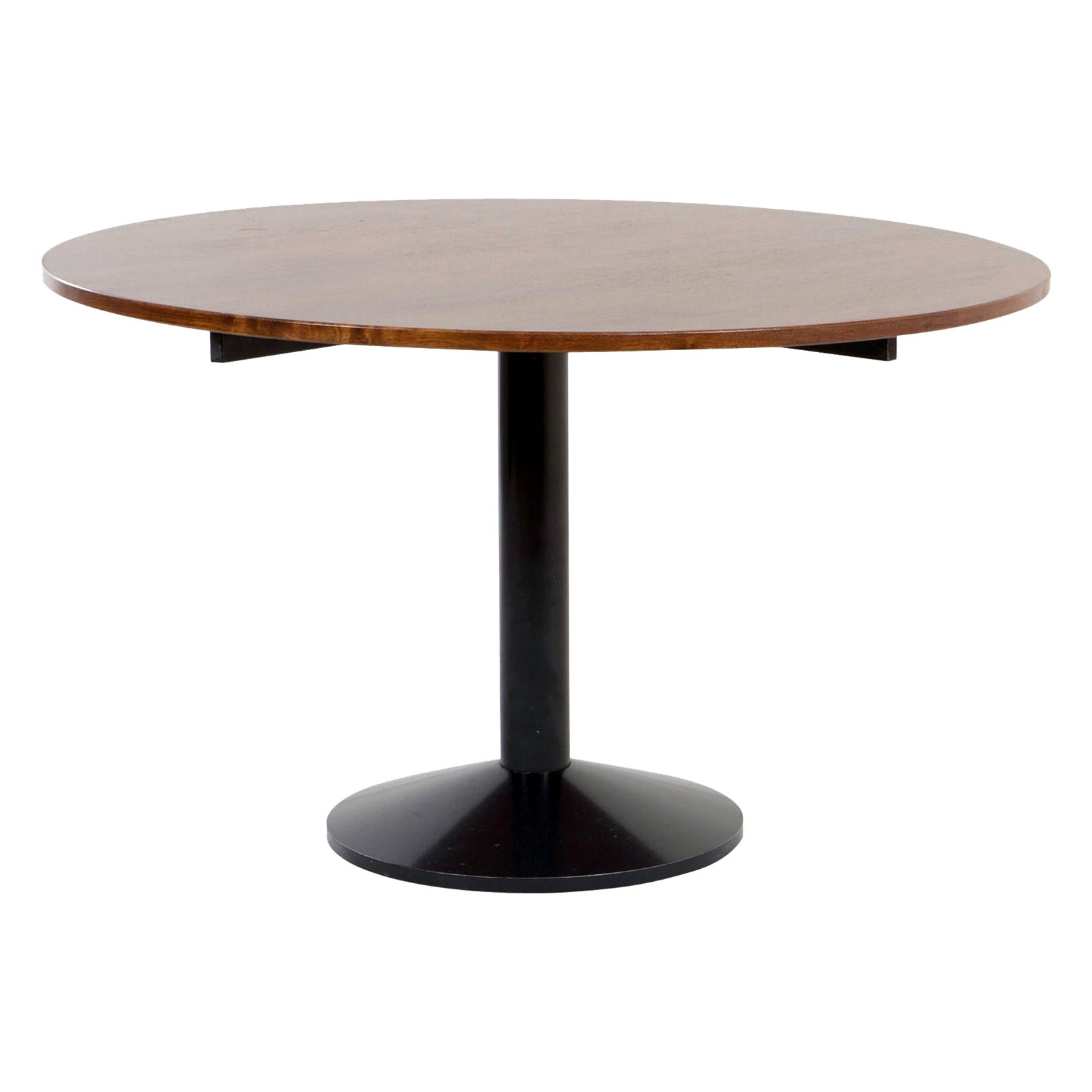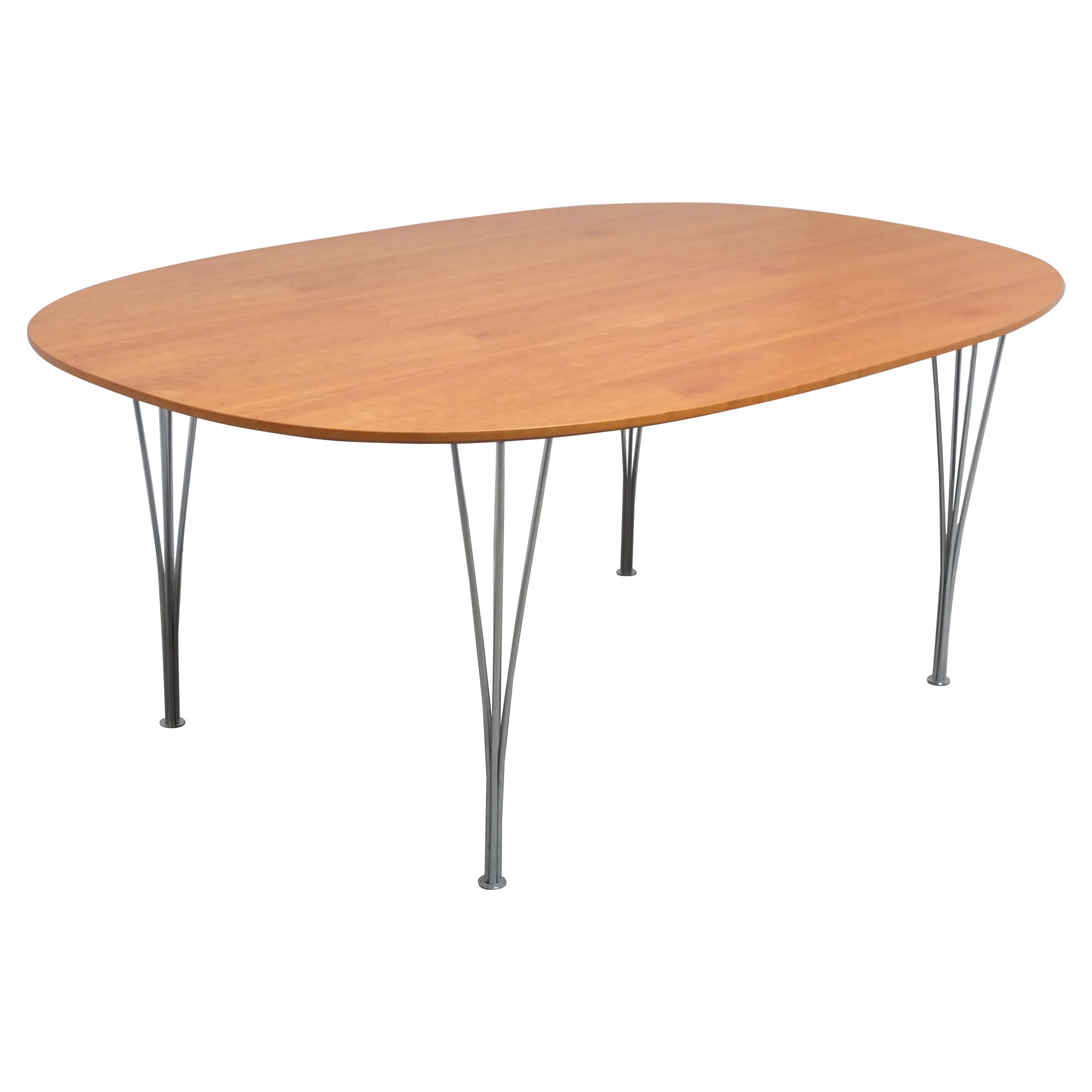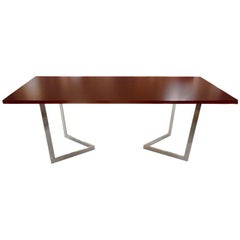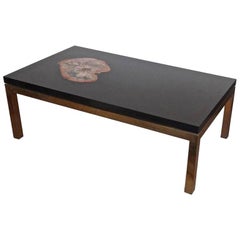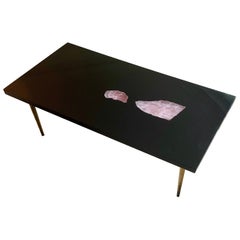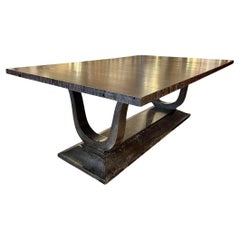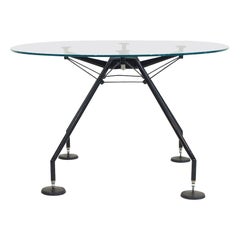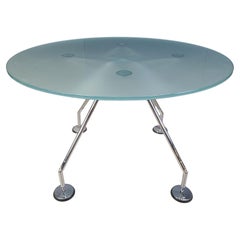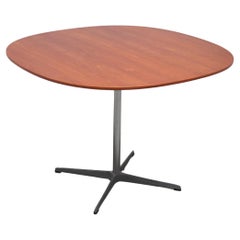Items Similar to Iconic Nomos Table with a Circular Walnut Top by Norman Foster, Italy 1986
Want more images or videos?
Request additional images or videos from the seller
1 of 8
Iconic Nomos Table with a Circular Walnut Top by Norman Foster, Italy 1986
$2,408.37
$3,010.4720% Off
£1,781.89
£2,227.3720% Off
€2,000
€2,50020% Off
CA$3,330
CA$4,162.5020% Off
A$3,655.93
A$4,569.9120% Off
CHF 1,907.31
CHF 2,384.1320% Off
MX$44,241.83
MX$55,302.2920% Off
NOK 23,905.12
NOK 29,881.4020% Off
SEK 22,524.91
SEK 28,156.1320% Off
DKK 15,228.06
DKK 19,035.0720% Off
About the Item
Futurist dining or conference table with a light walnut top.
Designed by Norman Foster for Tecno.
Italy around 2000.
- Creator:Sir Norman Foster (Designer)
- Dimensions:Height: 28.75 in (73 cm)Diameter: 54.73 in (139 cm)
- Style:Futurist (In the Style Of)
- Materials and Techniques:
- Place of Origin:
- Period:1980-1989
- Date of Manufacture:1986
- Condition:Wear consistent with age and use.
- Seller Location:Brussels, BE
- Reference Number:1stDibs: LU4567127539112
About the Seller
5.0
Vetted Professional Seller
Every seller passes strict standards for authenticity and reliability
Established in 2019
1stDibs seller since 2019
101 sales on 1stDibs
Typical response time: 7 hours
- ShippingRetrieving quote...Shipping from: Brussels, Belgium
- Return Policy
Authenticity Guarantee
In the unlikely event there’s an issue with an item’s authenticity, contact us within 1 year for a full refund. DetailsMoney-Back Guarantee
If your item is not as described, is damaged in transit, or does not arrive, contact us within 7 days for a full refund. Details24-Hour Cancellation
You have a 24-hour grace period in which to reconsider your purchase, with no questions asked.Vetted Professional Sellers
Our world-class sellers must adhere to strict standards for service and quality, maintaining the integrity of our listings.Price-Match Guarantee
If you find that a seller listed the same item for a lower price elsewhere, we’ll match it.Trusted Global Delivery
Our best-in-class carrier network provides specialized shipping options worldwide, including custom delivery.More From This Seller
View AllFrançoise Sée Trestles Table Desk with a Red Lacquer Top, France, 1970
By Françoise See
Located in Brussels, BE
The red lacquer top rests on a pair geometric trestles formed of a thick chrome steel blade. Designed by Françoise Sée (Maison Ramsay), circa 1970.
Category
Vintage 1970s French Desks and Writing Tables
Materials
Metal
$2,504 Sale Price
30% Off
Low Table with a Petrified Wood Inlay by Philippe Barbier, France, 1970
By Philippe Barbier
Located in Brussels, BE
Black lacquer top showing a recessed petrified wood slice (Arizona).
Brass and square feet base.
By Philippe Barbier,
circa 1970.
Category
Vintage 1970s French Mid-Century Modern Coffee and Cocktail Tables
Materials
Brass
$2,841 Sale Price
20% Off
Low Resin and Quartz Table with Brass Legs Signed Philippe Barbier, France 1960
By Philippe Barbier
Located in Brussels, BE
In the style of Ado Chale, a black resin low table with two quartz inclusions.
Two-tones conic brass legs.
The table can be illuminated from below.
Sig...
Category
Antique 1860s French Mid-Century Modern Tables
Materials
Quartz, Brass
$7,706 Sale Price
20% Off
Large Art Deco Cerused Oak Dining Table By Maison Carlhian- Paris 1938.
By Maison Carlhian
Located in Brussels, BE
Exceptional Art Deco cerused oak dining room table with two additional extentions forming a table for 10 people.
Labeled under the top: R & M Carlhian decorateurs-Paris.
In the style...
Category
Vintage 1930s French Art Deco Dining Room Tables
Materials
Bronze
Dining Room Marble Table Attributed to Carlo Scarpa, Italy 1970.
By Carlo Scarpa
Located in Brussels, BE
Spectacular pink beige marble dining table in three parts.
The top is resting on a stepped base.
Attributed to Scarpa, Italy 1970.
Category
Vintage 1970s Italian Mid-Century Modern Dining Room Tables
Materials
Marble
$3,853 Sale Price
20% Off
Large Neoclassical Coffee Table in Faux Turtoise Shell attrib. to Maison Jansen
By Maison Jansen
Located in Brussels, BE
Elegant rectangular coffee table attributed to Maison Jansen.
Faux tortoiseshell and faux ivory top forming a neoclassical pattern and resting on large square feet.
France 1980.
Category
Vintage 1980s French Neoclassical Coffee and Cocktail Tables
Materials
Wood
$2,215 Sale Price
44% Off
You May Also Like
Round Dining Table Nomos by Sir Norman Foster & Partner
By Tecno, Sir Norman Foster
Located in Madrid, ES
Round table, model Nomos, design by Sir Norman Foster & Partner for Tecno, Italy. Designed in 1986. Black painted metal, plastic. Loose clear glass plate. Manufacturer's mark. Minor ...
Category
Late 20th Century Italian Modern Tables
Materials
Steel
Round Dining Table, Conference Table designed by Knoll, 1960s
By Knoll
Located in Antwerp, BE
Large Knoll executive round conference, dining table. Stunning and very rare round dining or conference table by Florence Knoll has a versatile diameter of 158 cm. It has a solid woo...
Category
Vintage 1960s German Mid-Century Modern Conference Tables
Materials
Aluminum
$6,261 Sale Price
20% Off
Nomos Dining Table by Norman Foster for Tecno, 1990s
By Tecno, Sir Norman Foster
Located in Leuven, Vlaams Gewest
This dining table was designed by Sir Norman Foster for Tecno.
Originally designed for use in his London office, this design became a succes and is a classic still for sale today.
...
Category
1990s Italian Post-Modern Dining Room Tables
Materials
Chrome
Teak 'Super-Circular' Table by Piet Hein & Bruno Mathsson for Fritz Hansen, 1968
By Piet Hein, Fritz Hansen, Bruno Mathsson
Located in Antwerpen, VAN
Early ‘Super-Circular’ dining table designed by Piet Hein & Bruno Mathsson in 1968. This old version features a top in beautiful teak wood combined with a sleek and practical pedesta...
Category
Mid-20th Century Danish Scandinavian Modern Dining Room Tables
Materials
Metal
Franco Albini TL30 Round Table in Metal and Wood by Poggi 1950s
By Franco Albini, Poggi
Located in Montecatini Terme, IT
TL30 table with a round top in wood and a base in black lacquered metal, designed by Franco Albini and produced by Poggi in the 1950s.
After spending his childhood and part of his youth in Robbiate in Brianza, where he was born in 1905, Franco Albini moved with his family to Milan. Here he enrolled in the Faculty of Architecture of the Polytechnic and graduated in 1929. He starts his professional activity in the studio of Gio Ponti and Emilio Lancia, with whom he collaborates for three years. He probably had his first international contacts here
In those three years, the works carried out are admittedly of a twentieth-century imprint. It was the meeting with Edoardo Persico that marked a clear turning point towards rationalism and the rapprochement with the group of editors of “Casabella”.
The new phase that that meeting provoked starts with the opening of the first professional studio in via Panizza with Renato Camus and Giancarlo Palanti. The group of architects began to deal with public housing by participating in the competition for the Baracca neighborhood in San Siro in 1932 and then creating the Ifacp neighborhoods: Fabio Filzi (1936/38), Gabriele D’Annunzio and Ettore Ponti (1939).
Also in those years Albini worked on his first villa Pestarini.
But it is above all in the context of the exhibitions that the Milanese master experiments his compromise between that “rigor and poetic fantasy” coining the elements that will be a recurring theme in all the declinations of his work – architecture, interiors, design pieces . The opening in 1933 of the new headquarters of the Triennale in Milan, in the Palazzo dell’Arte, becomes an important opportunity to express the strong innovative character of rationalist thought, a gym in which to freely experiment with new materials and new solutions, but above all a “method”.
Together with Giancarlo Palanti, Albini on the occasion of the V Triennale di Milano sets up the steel structure house, for which he also designs the ‘furniture. At the subsequent Triennale of 1936, marked by the untimely death of Persico, together with a group of young designers gathered by Pagano in the previous edition of 1933, Franco Albini takes care of the preparation of the exhibition of the house, in which the furniture of three types of accommodation. The staging of Stanza per un uomo, at that same Triennale, allows us to understand the acute and ironic approach that is part of Albini, as a man and as a designer: the theme addressed is that of the existenzminimum and the reference of the project is to the fascist myth of the athletic and sporty man, but it is also a way to reflect on low-cost housing, the reduction of surfaces to a minimum and respect for the way of living.
In that same year Albini and Romano designed the Ancient Italian Goldsmith’s Exhibition: vertical uprights, simple linear rods, design the space. A theme, that of the “flagpole”, which seems to be the center of the evolution of his production and creative process. The concept is reworked over time, with the technique of decomposition and recomposition typical of Albinian planning: in the setting up of the Scipio Exhibition and of contemporary drawings (1941) the tapered flagpoles, on which the paintings and display cases are hung, are supported by a grid of steel cables; in the Vanzetti stand (1942) they take on the V shape; in the Olivetti store in Paris (1956) the uprights in polished mahogany support the shelves for displaying typewriters and calculators. The reflection on this theme arises from the desire to interpret the architectural space, to read it through the use of a grid, to introduce the third dimension, the vertical one, while maintaining a sense of lightness and transparency.
The flagpole is found, however, also in areas other than the exhibition ones. In the apartments he designed, it is used as a pivot on which the paintings can be suspended and rotated to allow different points of view, but at the same time as an element capable of dividing spaces. The Veliero bookcase...
Category
Vintage 1950s Italian Mid-Century Modern Tables
Materials
Metal
Walnut 'Superellipse' Table by Piet Hein & Bruno Mathsson for Fritz Hansen, 1967
By Bruno Mathsson, Piet Hein, Fritz Hansen
Located in Antwerpen, VAN
A ‘Super-Elliptical’ dining table designed by Piet Hein & Bruno Mathsson in 1967. This example features a beautiful top made of walnut with a magnificent wood grain, combined with th...
Category
Mid-20th Century Danish Scandinavian Modern Dining Room Tables
Materials
Metal
More Ways To Browse
Nomos Table
Norman Foster Tecno Nomos Tables
Nomos Norman Foster
Norman Foster Nomos Table
Norman Foster Tecno
Round Conference Tables
Oval Conference Tables
Glass Top Conference Tables
Office Conference Room Tables
Wooden Conference Tables
Danish Conference Table Teak
Pink Lacquer Desk
Knoll Boat Table
Used Conference Tables And Chairs
Large Round Conference Table
Used 12 Conference Table
Leather Top Conference Table
8ft Round Table
